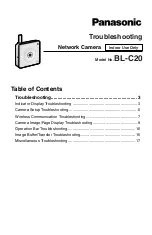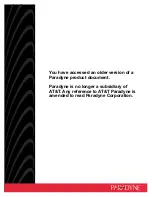
3Com Switch 8800 Configuration Guide
Chapter 38 MSTP Region-configuration
38-9
BPDU for every port: substituting the root ID with the root ID in the configuration BPDU
of the root port, the cost of path to root with the value made by the root path cost plus
the path cost corresponding to the root port, the designated bridge ID with the local
switch ID and the designated port ID with the local port ID.
Switch compares the calculated BPDU with the BPDU of corresponding port. If the
BPDU of corresponding port is better, the port is blocked, and the BPDU of the port
remains unchanged. The port will not forward data and only receive but not send BPDU.
If the calculated BPDU is better, the port will be the designated port, and the port BPDU
will be modified by the calculated BPDU and sent out regularly.
The comparison process of each switch is as follows.
Switch A:
AP1 receives the configuration BPDU from Switch B and finds out that the local
configuration BPDU priority is higher than that of the received one, so it discards the
received configuration BPDU. The configuration BPDU is processed on the AP2 in a
similar way. Thus Switch A finds itself the root and designated bridge in the
configuration BPDU of every port. It regards itself as the root, retains the configuration
BPDU of each port and transmits configuration BPDU to others regularly thereafter. By
now, the configuration BPDUs of the two ports are as follows:
Configuration BPDU of AP1: {0, 0, 0, AP1}.
Configuration BPDU of AP2: {0, 0, 0, AP2}.
Switch B:
BP1 receives the configuration BPDU from Switch A and finds that the received BPDU
has a higher priority than the local one, so it updates its configuration BPDU.
BP2 receives the configuration BPDU from Switch C and finds that the local BPDU
priority is higher than that of the received one, so it discards the received BPDU.
By now, the configuration BPDUs of each port are as follows: Configuration BPDU of
BP1: {0, 0, 0, AP1}, Configuration BPDU of BP2: {1, 0, 1, BP2}.
Switch B compares the configuration BPDUs of the ports and selects the BP1 BPDU as
the optimum one because the current configuration BPDU {0, 5, 0, AP1} of BP1 has a
higher priority than the configuration BPDU {1, 0, 1, BP2} of BP2. Thus BP1 is elected
as the root port and the configuration BPDUs of Switch B ports are updated as follows.
The configuration BPDU of the root port BP1 retains as {0, 5, 0, AP1}. BP2 updates root
ID with that in the optimum configuration BPDU, the path cost to root with 5, sets the
designated bridge as the local switch ID and the designated port ID as the local port ID.
Thus, the configuration BPDU becomes {0, 5, 1, BP2}.
Then, all the designated ports of Switch B transmit the configuration BPDUs regularly.
Switch C:
















































